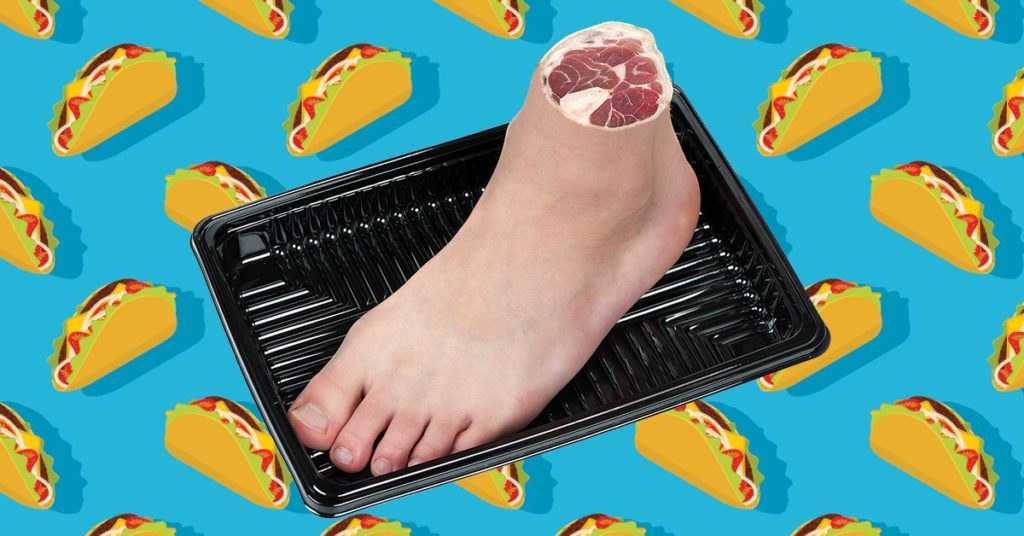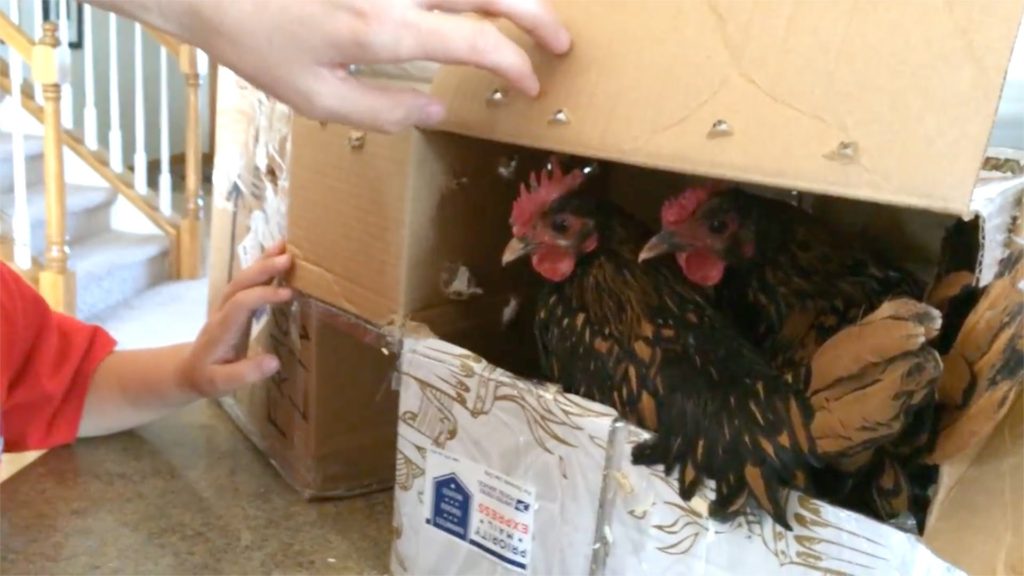Welcome to a very egg-citing edition of Kitchen Hacks all about – you guessed it – eggs! Seeing as it’s Easter 2020, and instead of heading to church, family events, Easter Egg Rolls, or any other Sunday social gatherings we figured we would regale you with a virtual Easter basket chock-full of tasty egg related material!
In recent weeks you may have noticed a pretty serious depletion (and price increase) of eggs at the grocery store. According to egg-onomic egg-sperts (fair warning; I’m going to do this EVERY time) “…sales of eggs in shells went up 44 percent for the week ending March 14 compared with a year ago, with retailers ordering six times normal volume. Wholesale egg prices have risen 180 percent since the beginning of March.” Apparently the current shortage has been caused by a new phenomenon called “stress-baking” (a.k.a. attempting to keep the little ones busy while coop-ed up in quarantine).
I’ve always wondered why Easter is strongly associated with eggs. Further eggs-amination lead me to Carole Levin, Professor of History and Director of the Medieval and Renaissance Studies Program at the University of Nebraska, who suggests that “many scholars believe that Easter had its origins as an early Anglo-Saxon festival that celebrated the goddess Eastre, and the coming of spring, in a sense a resurrection of nature after winter… Some Christian missionaries hoped that celebrating Christian holy days at the same times as pagan festivals would encourage conversion, especially if some of the symbols carried over. Eggs were part of the celebration of Eastre. Apparently eggs were eaten at the festival and also possibly buried in the ground to encourage fertility.”
If the whole appropriation of pagan rituals isn’t really your thing, during my egg-stensive research, I learned you can also use eggs to detect evil magic!

Here in the Bergmann household we LOVE cooking with and eating eggs. In recent years, however, we’ve radically changed the way we shop for eggs. The following is a quick rundown of egg nomenclature and some tidbits on purchasing eggs that you may find enlightening.
Quality: Does it matter? Sort of…
Grade AA: AA eggs are supposed to have exceptionally firm, thick egg whites and a round, high yolk. They’re best when used for poaching or frying, but can certainly be used for any purpose.
Grade A: These are the eggs typically found in your local grocery store. These eggs are very similar to AA eggs except for their whites, which can be slightly less firm. They are also excellent for poaching and frying, but can be used for anything.
Grade B: Grade B eggs have a flatter yolk and thinner whites. Typically, these are used for scrambled eggs or shuffled off for industrial use (i.e. dry, frozen or liquid egg products).
Things to ignore:
All-Natural/Farm Fresh
This term simply indicates that the product is eggs. The label does not guarantee anything about the provenance or quality of the eggs, though they may be minimally processed and contain no added ingredients.
Hormone-Free
Government regulations prohibit hormones from being artificially injected into chickens, meaning every egg is already hormone-free. Although some eggs may be labeled this way, they are just the same as every other egg.
Antibiotic-Free
Antibiotics are so rarely used in the poultry industry that almost every egg is already antibiotic-free. Some eggs may be labeled this way, but it doesn’t do anything to set them apart from every other egg. Even when hens are injected with antibiotics, their eggs will not be affected. Only three types of antibiotics have been approved by the FDA to treat diseases in hens and these have no effect on eggs. If anything, these drugs have the power to cure chickens of diseases and prevent them from laying infected eggs.
Color
What do these different colors mean? Absolutely nothing! A colored egg is no healthier or unhealthier than a white egg. There is no variance in nutritional value at all. In fact, the only reason some eggs have different colors is because of the genetics of the chicken who laid the egg. Some folks claim a general way to tell what color egg a chicken will lay is to look at her earlobe! HOLD on CHICKENS have EARLOBES. Yeah, apparently they have earlobes. Boil that in your brain for one minute.

A hen with a white earlobe will always lay white eggs, whereas hens with red earlobes can lay brown, blue or green eggs. According to eggs-perts this is not a perfect science. (Duh)
Things to consider:
Omega-3
Eggs with this label come from hens that are fed a diet—often flaxseeds and occasionally fish oil—that produces higher levels of omega-3 fatty acids in their yolks. While this is a fairly new label it’s quickly becoming quite popular due to the way these eggs provide consumers with a small boost in their omega-3s.
Certified Organic
A voluntary certification issued by the USDA, guaranteeing that the hens are fed an organic, vegetarian diet (see below) free of antibiotics and pesticides. They are also required to live uncaged in barns with outdoor access, but the amount of time hens are allowed outdoors is undefined. While it isn’t guaranteed, these chickens are far more likely to have exposure to sunlight during their lives. One of the primary benefits of certified organic eggs is that they limit your exposure to potentially harmful pesticides.
Cage-Free/Free-Range/Free-Roaming
The hens are not kept in battery cages, an unfortunate industry practice that keeps hens confined to tiny spaces. “Free-range” or “free-roaming” typically means that the hens have some access to the outdoors, though there’s no guarantee they actually go there, while “cage-free” may or may not involve the option to go outside. In most cases, the chicken still lives in very close quarters with little or no sunlight. Their beaks and wings were probably still clipped. However, per their distinctive label, the chickens were not technically raised in cages.
The gold standard:
Certified Humane
This label, issued by Humane Farm Animal Care, indicates that the birds are uncaged and have living conditions that meet a minimum standard. This includes a prohibition on molting through starvation, a technique widely practiced in commercial egg production to increase the number of eggs that hens in their second or third season can lay. Chickens must live in decent conditions that are checked regularly for rodents and have proper ventilation and nice floor coverings. The hens also need to be given boxes of dirt to dust-bathe in.
Animal Welfare Approved
Animal Welfare-Approved (AWA) is an organization designed to promote higher levels of environmentally sustainable farming practices as well as animal welfare. Food that has been approved by this organization must have been farmed using green farming methods and the animals must have been raised using humane practices.
The AWA issues this label to eggs from cage-free hens that have continuous outdoor access. The birds are also required to have a certain amount of space, perches, and nesting boxes per flock. They must be allowed to molt naturally, and beak cutting is not allowed.
Things to potentially avoid:
Vegetarian-Fed
This label conveys that the hens are fed an all-vegetarian diet with no animal by-products, as with certified organic eggs.
Adrienne Rose Johnson of Bon Appetit writes, “Vegetarian-fed hens don’t make a lot of sense because chickens are bloodthirsty scavengers. Sure they eat grains and seeds, but chickens are omnivores and eat just about everything: earthworms, crickets, little specks of insects and fly larvae harvested in cow patties. All sorts of tiny buggy living things we can’t see and would probably rather not think about.”
“One chicken farmer at Polyface Farms in Virginia reported a nasty case of cannibalism after feeding his chickens a vegetarian diet. Apparently so deprived of protein, the chicks began eating each other.” (Actually, to use the farmer’s words, “the more aggressive chicks were tearing at the weaker ones from the outside in”.) “They only stopped cannibalizing when fed small pieces of a deer carcass, freshly skinned and harvested from the roadside.”
Poultrygeist is an ACTUAL movie, with ACTUAL actors, and movie reviews; Owen Gleiberman of Entertainment Weekly awarded the film a B+ rating, calling it “an exploitation movie with soul” and noting “it’s genuine sick fun, and there isn’t a boring moment in it”. Nathan Lee of The New York Times spoke of the film as being “as perfect as a film predicated on the joys of projectile vomiting and explosive diarrhea can be”, describing it as “liberating” in a “lowbrow way”.
Speaking of cannibalism and seeing as it’s Easter Sunday and there’s that whole body of Christ thing (just yolkin’ around y’all), here’s an article about a guy who actually hosts a dinner party to eat his own foot:
I don’t mean to sound like such an egghead but as far as cooking eggs goes they are unusually versatile. They are one of the only foods that comes pre-packaged and straight out of the shell can be prepared without any other ingredients (about) 14 different ways. And boiling alone can yield results as versatile as the egg itself.
Eggs also come in a plethora of different sizes (laid by a variety of birds) from the tiny quail egg to the illustrious ostrich egg. The latter happens to be the largest single cell on the planet and contains the equivalent volume of up to 24 normal sized eggs. Here’s a video straight from the Bergmann archives of the time we were gifted an ostrich egg by our friend Dan the Song Parody Man and made two whole trays of deliciousness we aptly named the Dragon Frittata:
If you are in the habit of eating 24 eggs per day and ostrich eggs are not readily available you may need to consider getting your own flock of egg producers to satisfy that insatiable hunger. As luck would have it, chickens can be raised in nearly any city in America by anyone who damn well pleases to raise chickens. Even our very own metropolis of NYC is an eggs-tremely chicken-friendly city. The Department of Parks & Recreation even (periodically) sponsors workshops for residents interested in learning how to raise their own backyard chickens.
So where can you purchase your very own feathered friend? Online of course! Turns out the United States Postal Service has officially been mailing out poultry and select other live animals like bees, snails, scorpions, goldfish, “small, harmless, cold-blooded animals,” and even baby alligators—so long as they’re under 20 inches—to people all over the country since 1918.
Wait… how do all those baby chicks survive the journey from coop to stoop? The theory is just before baby chickens leave their shell they eat all of the yolk left inside which provides all the sustenance they need for their first few days of life.
John Metzer, owner of Gonzales, a California-based chicken hatchery explains, “God designed them that way so we can mail them.”
A big thanks to Mr Metzer for reminding us that mail-order chicks is just one more miraculous thing the g-man did for us this holiday Sunday.






